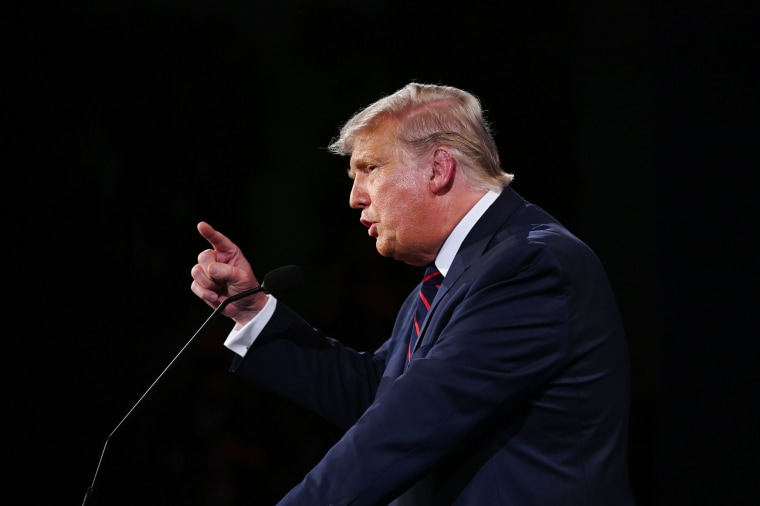The final jobs report before the general election shows a gain of just 661,000 jobs for September and the unemployment fell from 8.4 percent to 7.9 percent, according to data released Friday by the Bureau of Labor Statistics.
Over the summer the unemployment rate fell from its lockdown spike of 14.7 percent to 8.4 percent by August, but the pace of gains has drastically slowed, pointing toward a protracted period of fragile recovery that could be further imperiled if infection rates worsen.
It’s a “steady flood of job loss,” said Bill Spriggs, an economist for the AFL-CIO labor union. “The next six months… look pretty bad because what happened in August with people using so much credit is they’re going to be reticent to spend money by Christmas. We won’t have enough jobs back by November.”
The data for the monthly jobs report comes from a survey of workers conducted the week of the 12th of the prior month. Fresher data shows scant signs of economic recovery. Initial jobless claims this week were about 837,000, a number the country has hovered around since lockdowns lifted.
“We are still experiencing eye-watering levels of conventional claims,” Daniel Alpert, senior fellow in financial macroeconomics at Cornell Law School, told NBC News in an email. “Smaller employers are having difficulty holding on and we are now seeing the effect of the big company layoffs.”
Data in this jobs report is not fully updated for California, which paused claims for two weeks in order to process a backlog of 600,000 claims and over 1 million claims.
This jobs report is an important benchmark for President Donald Trump, who has pegged his success to the gyrations of the stock market and the overall jobs number, and will give him a figure to tout or dismiss in the final weeks before Nov. 3.
Trump repeatedly claimed before and after his 2016 election that he will be “the greatest jobs president God ever created.” However, an overall 3.9 million net jobs have been lost during the Trump administration. Despite coasting on the back of the longest labor expansion in U.S. history, Trump has failed to execute any specific job creation policies, except for tax cuts principally benefiting corporations and the wealthy.
During Tuesday’s debates Democratic candidate Joe Biden incorrectly said that Trump will be the only president leaving office with fewer jobs overall than when he entered. As far as recorded government data shows, Trump would actually be the first since Herbert Hoover lost the presidency as Great Depression job losses then gripped the nation.
Only 246,000 net manufacturing jobs have been added during Trump’s administration. But during the debate he falsely claimed over 700,000 had been added.
By February of 2020, only 483,000 manufacturing jobs were added. By August, 237,000 were lost.
With the pandemic nearing its seventh month, the jobless toll continues to mount. The axe has fallen particularly heavily this week: Tens of thousands of airline employees were furloughed on Wednesday after months of negotiations failed to produce a deal that would extend funding. Disney announced on Tuesday it would be laying off 28,000 workers. Oil giant Royal Dutch Shell confirmed this week it will lose 9,000 employees, and refiner Marathon Petroleum said Thursday it would be cutting 12 percent of its workforce. Allstate will also cut 3,800 jobs.
Hiring for the holiday shopping season will bring down some unemployment. Big-box retailers such as Walmart, Target and Best Buy have already started hiring thousands of associates, with the bulk of those positions in warehousing and fulfillment.
As infections spike in some areas and experts warn of a winter surge in cases, perils persist — most especially in industries directly exposed to coronavirus dangers. Up to 50 percent of New York City restaurants could permanently close in the next six months, according to a new report by the state comptroller, slashing jobs for waiters and restaurant staff and sales for their suppliers.
The majority of economists agree that the shape of the nation's economic recovery will be a “reverse radical symbol” where activity starts at a high level, plunges, and then returns to a lower level with a long period of extremely slow recovery.
Trump said during the debates that the recovery would be “V-shaped,” indicating a sharp decrease followed by a swift return to the way things were.
That’s only true for the fortunes of tech giants, which have soared in the rush to online shopping, internet-based activity, and cloud computing services.
Amid the doom and dread, there are some glimmers.
“Businesses have more certainty now that the new normal will be here for a long time,” said Julia Pollak, a labor economist at jobs site ZipRecruiter. “That is leading many disrupted industries to restructure, close locations, and finally convert furloughs to permanent layoffs. But it is also leading industries that have benefited from the crisis to expand their capital investments and hiring plans. Companies that were hedging before are now making the leap, reinventing themselves, pivoting to providing services online, outdoors, or in homes, and spreading the word.”
She predicts gains will be relatively small for the next several months, between 500,000 to 1.5 million, compared to the 11 million they have to make up for.
“Behind the topline figures, we'll continue to see tremendous churn for the next few months,” Pollak said.
CORRECTION: (October 7, 2:53 p.m. ET): A previous version of the story misstated the total net job loss under the Trump administration. It is 3.9 million, not 4.7 million.

